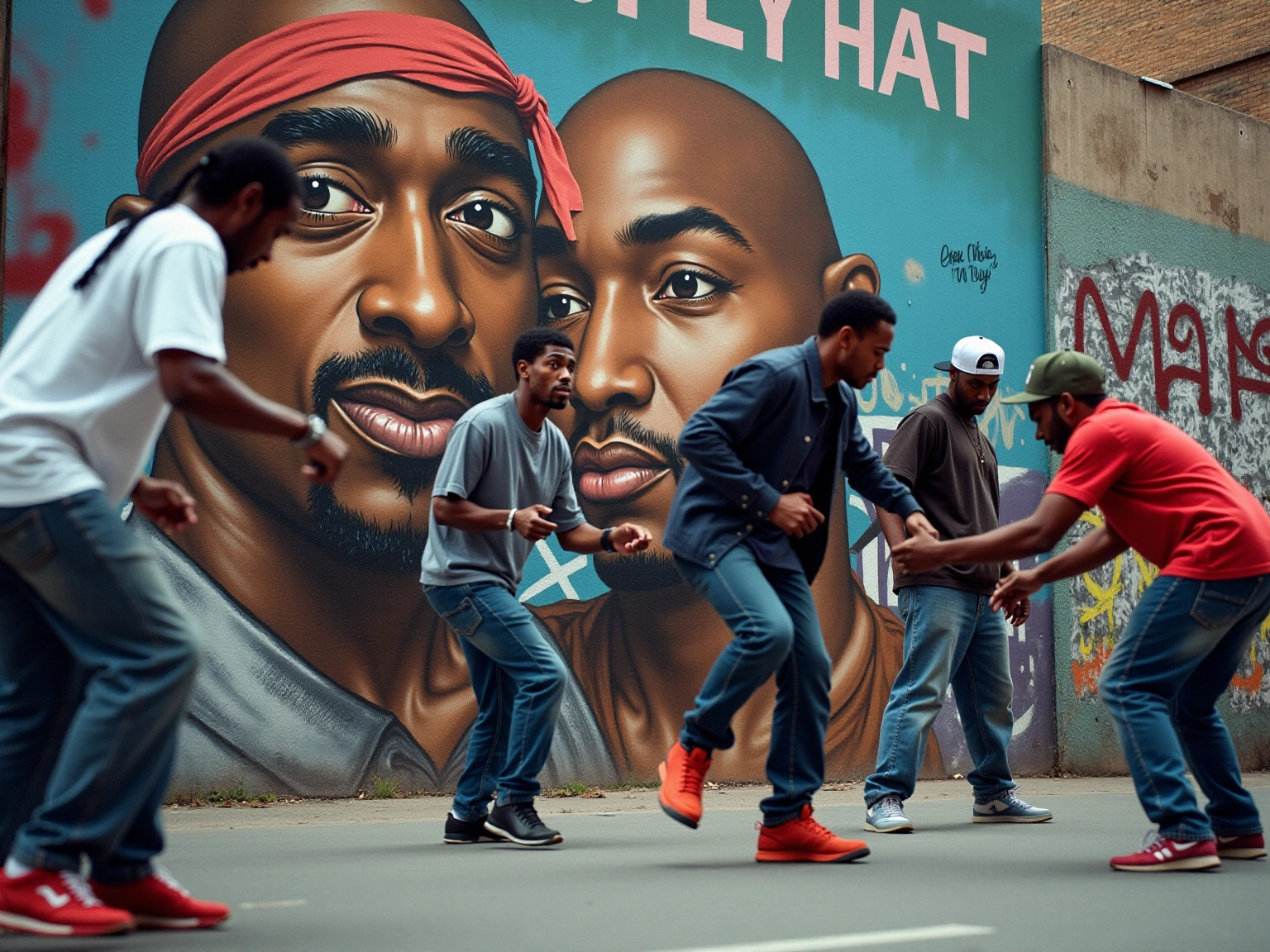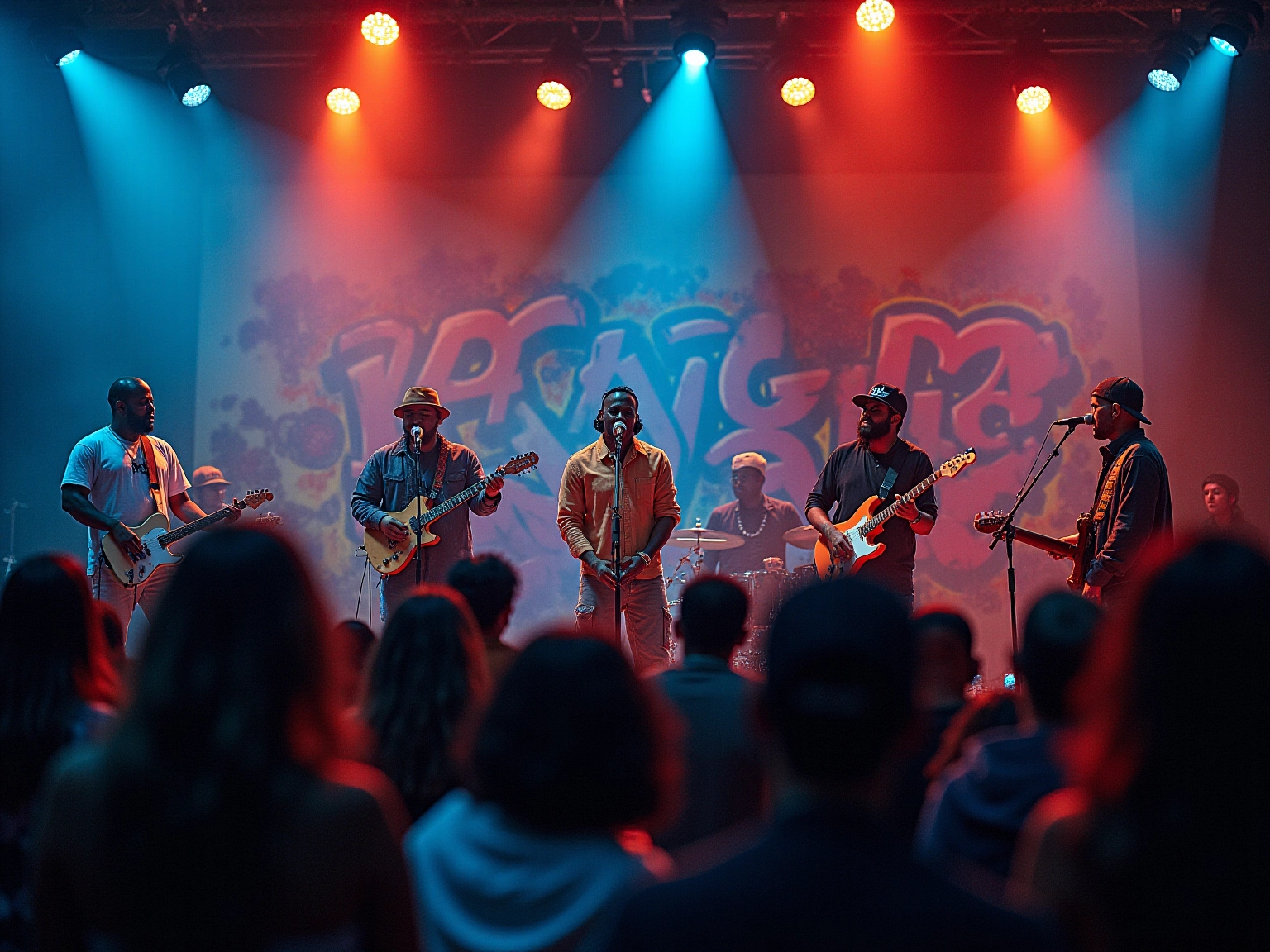
Rap is a dynamic musical style defined by rhythmic and rhyming speech, emerging from the African-American communities of New York City in the early 1970s. This genre has since transformed into a global cultural phenomenon. The core elements of rap, including lyrical content and delivery, are essential to its identity. Furthermore, rap’s historical significance is underscored by its adaptability through various subgenres and its capacity for social commentary. This musical form plays a crucial role in addressing societal issues and has significantly influenced mainstream culture.
Rap music serves as a vibrant testament to the power of rhythm and words, encapsulating the essence of cultural expression and social commentary. Emerging from the streets of New York City in the 1970s, this genre has evolved from its modest beginnings into a global phenomenon that transcends borders and languages.
With a rich tapestry of lyrical complexity, diverse subgenres, and profound societal impact, rap not only entertains but also compels listeners to confront pressing social issues. As it continues to evolve, the genre remains a vital voice for marginalized communities, reflecting their struggles and aspirations while influencing mainstream culture in unprecedented ways.
This exploration delves into the core elements of rap, its historical significance, and the ways it has shaped, and been shaped by, the world around it.
What is raps is a dynamic musical style defined by rhythmic and rhyming speech, typically performed over a beat. Originating from the African-American communities of New York City in the early 1970s, rap has evolved into a global cultural force. To understand what is raps, one must consider the core elements, which include:
Rappers frequently employ techniques such as internal rhymes, alliteration, and intricate wordplay to enhance their lyrical expression. Notably, approximately 70% of rap songs feature internal rhymes, underscoring the genre’s emphasis on linguistic creativity.
The evolution of rap reflects changes in style and delivery, mirroring broader cultural trends and societal issues. A pivotal moment in the genre’s history occurred with N.W.A’s ‘Straight Outta Compton’, the first album to receive a ‘parental advisory’ label, influencing societal norms. Trends in 2025 reveal a burgeoning fusion of genres, as artists blend rap with elements of pop, rock, and electronic styles, thereby broadening its reach and appeal. Music historians assert that what is raps lies in its resilience, creativity, and unapologetic self-expression, resonating profoundly with audiences in search of authenticity and innovation. Daniel Parris articulates this sentiment, stating, “Younger audiences will always seek out prohibited content as they search for cultural artifacts that provide something different or controversial,” highlighting rap’s role in challenging social norms.
As rap continues to evolve, its characteristics remain anchored in the foundational elements of the style, ensuring the preservation of its unique identity while adapting to contemporary influences. This ongoing development not only illustrates the genre’s flexibility but also its enduring significance in the soundscape, empowering underprivileged communities and influencing mainstream culture.

What is raps? It emerged from the vibrant hip-hop culture of the 1970s, encompassing DJing, breakdancing, and graffiti art. This genre achieved national recognition with the groundbreaking release of ‘Rapper’s Delight’ by the Sugarhill Gang in 1979, a pivotal moment that helped define what is raps in the music landscape. This song not only marked the commercial breakthrough of rap but also underscored the efficiency and creativity inherent in hip-hop culture, mirroring how Inferscience ensures its solutions deliver efficiency and compliance in healthcare coding.
As the 1980s and 1990s unfolded, the question of what is raps evolved into various subgenres, including gangsta rap and conscious rap, each reflecting distinct aspects of urban life and pressing community concerns. Iconic figures such as Tupac Shakur and The Notorious B.I.G. utilized their artistry to confront themes of poverty, violence, and racial inequality, thereby establishing rap as a powerful voice for marginalized communities.
Candace McDuffie notes that rap continues to provide its artists with the platform to articulate the uniqueness of the black experience, emphasizing its cultural significance. This evolution not only illustrates what is raps as a genre’s adaptability but also highlights its role as a medium for social commentary and change.
Historical statistics reveal that by the late 1990s, what is raps had emerged as one of the most favored styles in the United States, showcasing its substantial influence on the music industry and society as a whole. Incorporating case studies on the cultural importance of rap during the 1980s and 1990s further illustrates how the genre has both influenced and been shaped by the socio-political landscape.

In the realm of healthcare, managing HCC coding presents significant challenges, akin to the complexities found in various musical genres. Just as distinct genres convey unique messages, healthcare providers face specific obstacles in risk adjustment and coding compliance. Inferscience’s HCC Assistant illustrates how the right tools can streamline workflows, enhance coding accuracy, and unify patient data through advanced NLP technology. This integration is crucial for maximizing funding from Medicare Advantage patients and addressing the nuances of patient care.
Moreover, the significance of data security in healthcare is highlighted by Inferscience’s attainment of SOC2 Type II certification, ensuring that patient data is not only unified but also accurately represented to bolster risk adjustment efforts. By concentrating on these essential elements, healthcare CFOs are better equipped to navigate the complexities of risk adjustment and enhance overall financial performance.
Rap music, which raises the question of what is raps, has long served as a powerful medium for commentary, encapsulating the struggles and aspirations of marginalized communities. Through their lyrics, artists address systemic issues like racism, poverty, and police brutality, illustrating what is raps that resonate deeply with listeners. Iconic tracks like ‘Fight the Power‘ by Public Enemy and ‘Alright’ by Kendrick Lamar have emerged as anthems for justice movements, galvanizing activism and inspiring change. The genre’s distinct capacity to express the frustrations and aspirations of its audience positions it as a significant cultural influence, shaping public dialogue and enhancing societal awareness.
In 2025, the number of rap songs discussing societal issues continues to grow, reflecting the genre’s ongoing evolution and relevance in contemporary society. For instance, the lyrics of ‘The Message’ highlight systemic challenges, mentioning a strike at the station, which serves as a concrete example of how rap addresses community issues. Expert opinions emphasize what is raps as not only a form of artistic expression but also as a critical commentary on systemic injustices. Political hip-hop continues to develop, tackling modern issues while alluding to historical events, thereby strengthening its role in promoting change.
Moreover, social activists have noted that rap serves as a powerful tool for social commentary, further solidifying its impact on social justice movements. The genre’s ability to articulate the complexities of societal struggles makes it an essential voice in the fight for equity and justice.
What is raps, and how it has evolved from its American origins into a significant global phenomenon, profoundly influencing sound and culture across various regions. Countries such as France, the UK, and South Africa have developed distinctive rap scenes that reflect their unique languages and cultural narratives.
For example, French rap artists like IAM and NTM delve into themes of immigration and identity, resonating deeply with their audiences. Similarly, South African rappers, including Nasty C, tackle pressing issues like inequality and resilience, underscoring the genre’s adaptability and relevance.
This worldwide embrace of rap highlights what is raps as a universal medium for expression, fostering connections among listeners across the globe. As we approach 2025, the consumption of the rap genre continues to rise, with notable growth observed in non-English speaking nations, further solidifying its status as a dominant force in the global sound landscape.
Notably, brands such as Pepsi have acknowledged this influence, achieving a market share increase of 2.7 points through campaigns that leverage rap music, including their sponsorship of Rap Viet. This initiative not only connected with Generation Z but also resulted in 159 percent more brand awareness than initially targeted.
Furthermore, Pepsi’s partnerships with e-commerce platforms like Lazada and Tiki for limited-edition merchandise sales illustrate the commercial aspects of rap’s influence, seamlessly integrating the genre into broader marketing strategies.

Rap music has undergone a remarkable transformation since its inception in 1970s New York City, evolving into a powerful global phenomenon characterized by lyrical depth, rhythmic innovation, and diverse styles. This genre transcends mere entertainment; it serves as a vital platform for cultural expression and social commentary, addressing pressing issues such as racism, poverty, and inequality.
Historically, rap has amplified the voices of marginalized communities. Artists like Tupac Shakur and Kendrick Lamar have harnessed their lyrics to inspire activism and shape public discourse. This tradition persists today, with contemporary artists advocating for social justice and raising awareness of critical issues through their music.
On a global scale, rap transcends cultural and linguistic boundaries, resonating with audiences in countries like France and South Africa. These regions have cultivated unique rap scenes that reflect local narratives and struggles, showcasing the genre’s adaptability and universal appeal.
In essence, rap music transcends being merely a genre; it is a dynamic cultural force that empowers voices, challenges societal norms, and fosters connections worldwide. Its ongoing evolution underscores the enduring power of rhythm and words to inspire change and provide a platform for authentic expression.